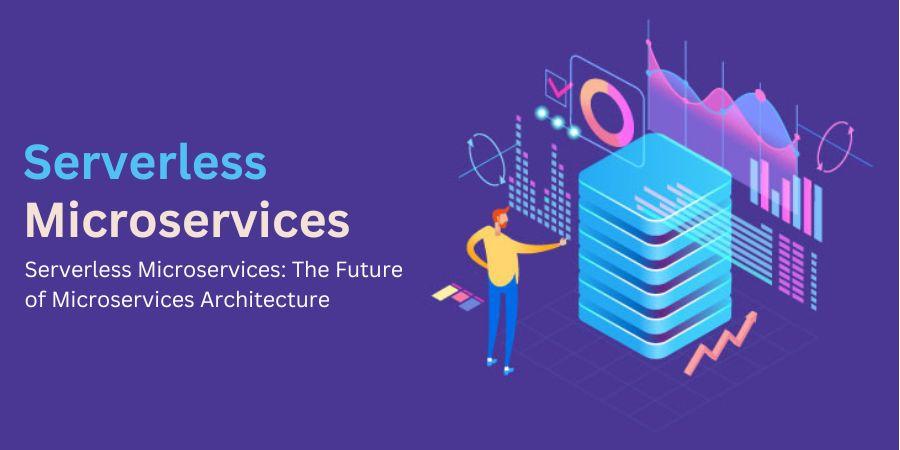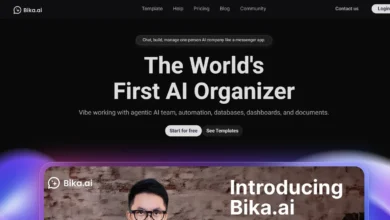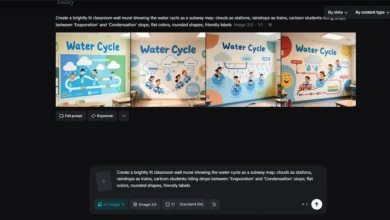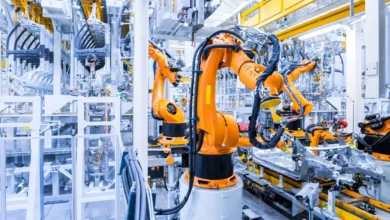
In recent times, a fascinating new paradigm in cloud computing known as serverless computing (or just Serverless) has emerged, with the potential to completely transform software architecture and app development. To tap into the limitless possibilities of serverless frameworks, numerous influential players in the industry have joined the cloud services bandwagon. Serverless computing is currently offered to clients by software giants such as Amazon, Google, Microsoft, and IBM through services like Microsoft Azure Functions and Amazon Web Services (AWS) Lambda.
A technology solution driven by events and requests is serverless architecture, to put it simply. It paves the way for application developers to operate in cloud-based environments that have all the computational capabilities necessary for efficient coding. Time is of important and resources are scarce; this arrangement saves the day.
In addition to streamlining application development using serverless computing, other optimization initiatives for businesses, such as DevOps and Agile, are also improved.
Learn all about serverless microservices software development, how they differ from the old ways of doing things, and how they’re going to change scalable architecture forever in this in-depth essay.
What are Serverless Microservices?
The architectural style known as serverless microservices allows applications to be constructed by assembling small, autonomous, and loosely connected services. It is common practice to install these services in containers or virtual machines because of their purpose-built nature. Serverless microservices depend on cloud providers to handle infrastructure, and they are event-driven, unlike traditional monolithic designs. Without having to worry about server provisioning or maintenance, developers can focus on building code with this technique.
By utilizing the idea of Function as a Service (FaaS), serverless microservices can run small pieces of code in reaction to events. These routines do not keep any data between runs because they are stateless. Serverless microservices can autonomously scale in response to demand since each function can be called separately, thanks to their event-driven nature. Because of their scalability, serverless microservices are perfect for apps whose workloads are unpredictable.
Serverless and Microservices Model: What’s the Difference?
Knowing the difference between serverless computing and microservices architecture is crucial for grasping the importance of serverless microservices. When using serverless computing, the cloud service provider handles resource allocation and provisioning on the fly. However, microservices design separates application logic into independent processes that are only loosely related to one another.
Benefits of Serverless Microservices Architecture
Simplicity, Efficiency, and Scalability
Applications may easily handle variable workloads with serverless microservices because of their natural scalability. The design can adapt to changing demands by dynamically scaling up or down, thanks to its flexibility in executing functions separately. Businesses may maximize resource utilization and cut expenses with this elasticity, as they only pay for functions that are used.
Quickness and Efficiency in Development
Serverless microservices increase development efficiency and flexibility by decomposing programs into smaller, self-contained services. Faster development cycles are possible since developers can work on separate services simultaneously. Time to market and release cycles are both improved by breaking services into their parts and testing, deploying, and maintaining them separately.
Fault Resilience and Isolation
Fault isolation is a feature of serverless microservices that ensures it does not negatively affect an application in the event of a service failure. Every service runs autonomously, limiting the impact of any failures to their specific areas. By preventing the propagation of failures from one service to another, this isolation also increases the system’s resilience. It is also easier to detect and fix problems with serverless architectures because they frequently use built-in monitoring and logging features.
Scalability with Serverless Microservices
One potent way to increase scalability is to combine serverless computing with microservices architecture. Because of their decoupling and autonomy, microservices make it possible to partition applications into more manageable parts. However, serverless computing takes care of scaling these components according to demand without a hitch.
Unprecedented scalability is achieved when serverless and microservices are married. The independent scalability of each microservice guarantees optimal performance and resource usage. Scaling up just one microservice at a time is a great way to deal with traffic spikes without overwhelming other services. Applications can easily handle variable workloads and costs this fine-grained scalability enhances efficiency.
Challenges and Solutions for Serverless Microservices
Starting with Cold and Performance
The cold start problem is an issue that serverless microservices have. When a function has been inactive for a while, its execution could be delayed, leading to a potential increase in latency when it is called. Methods like pre-warming or employing provided concurrency can lessen the impact of this problem. We can achieve a reduction in cold start time by frequently executing functions to keep them warm, which is known as pre-warming. Programmers can use provisioned concurrency to set aside a fixed number of instances that can immediately execute functions.
Complexity of Distributed Systems
Constructing a distributed system using serverless microservices becomes inherently complicated because each service is network-dependent. To overcome this obstacle, programmers can separate services using event-driven designs and message queues. Services can interact in a loosely connected manner by employing asynchronous communication patterns. This helps reduce dependencies and simplifies the overall architecture.
Checking and Fixing
The distributed architecture of serverless microservices makes monitoring and troubleshooting them difficult. Cloud providers provide services and technologies that make monitoring and logging easier. By making use of these instruments, programmers can learn how each service operates and how it performs. Distributed tracing is another useful tool for finding bottlenecks and fixing problems with various services at once.
Using Serverless Microservices in Your Architecture
To successfully deploy serverless microservices, consider these things.
1. Choose the right microservices
Determine whether parts of your application can be separated into smaller, more manageable services by doing an analysis. There should be well-defined interfaces for communication between microservices, and each microservice should have a specific role to play.
2. Building in Redundancy
Because serverless microservices are decentralized, we prioritize resilience. To deal with temporary problems, set up fault tolerance techniques like retries and circuit breakers. Also, make sure you have sufficient monitoring and observability to quickly identify and resolve problems.
3. Use Tools Built for the Cloud
Many services and products tailored to serverless microservices are available from cloud providers. Learn more about solutions that streamline deployment and administration and allow easy integration with other cloud services, such as AWS Lambda, Azure Functions, and Google Cloud Functions.
Solutions for Serverless Microservices using Frameworks and Tools
A plethora of frameworks and technologies are at your disposal to facilitate the creation and launch of serverless microservices.
1. DevOps Platform
One well-liked open-source framework that makes building, deploying, and managing serverless apps easier is the Serverless Framework. An extensive ecosystem of plugins and integrations is available, and it works with several different cloud providers.
2. Amazon Web Services SAM
One enhancement to AWS Cloud formation that streamlines deploying serverless apps on AWS is the AWS Serverless Application Model (SAM). It allows for easier local testing and debugging and provides a higher-level framework for constructing serverless resources.
3. Knative
Knative is a free and open-source platform that helps with serverless workload development, deployment, and management. It gives you the building blocks you need to scale, event, and be observable across different cloud providers with ease.
Where Serverless Architecture Is Headed in the Future
Several emerging themes will continue to influence the design of serverless microservices, even though they have already had a substantial influence. Among these tendencies are:
- Edge Computing: By deploying serverless architecture, functions may be executed closer to the end-user, which improves performance and decreases latency.
- Hybrid Architectures: Organizations can take advantage of both serverless microservices and more conventional architectures, like containers or virtual machines.
- Integration of AI and ML: Serverless architectures enable developers to construct intelligent apps effortlessly by providing a good foundation for integrating AI and ML capabilities.
- Serverless DevOps: Enhancing automation and agility, the deployment and maintenance of serverless microservices will be streamlined by integrating serverless architecture with DevOps processes.
- Containerization of Functions.: The serverless world is seeing containerization gain momentum. You can have more control over the runtime environment and use resources more efficiently by running serverless services inside containers. The usage of pre-existing container orchestration frameworks and tools becomes easier with containerization, which further allows for smooth integration with microservices ecosystems.
- Hybrid Cloud Deployments: Clientless architecture is adjusting to the new paradigm of enterprises that use multi-cloud and hybrid cloud methods. Emerging serverless frameworks enable mobility and reduce vendor lock-in by providing consistent abstractions across many cloud providers. Businesses may now take advantage of several cloud providers’ strengths while still keeping their architecture consistent, thanks to this trend.
Conclusion
A new and powerful way to develop efficient and scalable software architectures is with serverless microservices. Businesses can create faster and cheaper apps by making use of features like automatic scalability, agility, and fault isolation. While there are obstacles to overcome, it can mitigate them with methods like decoupling services, reducing cold start latency, and using monitoring tools. Edge computing and AI integration are two upcoming technologies in serverless architecture that will continue to impact the market landscape as it strengthens. Embracing serverless microservices can put enterprises ahead of the curve for technical improvements, allowing them to provide consumers with creative solutions.

















